Blue-green algae returns to Lough Neagh ‘with a vengeance’

By Finn Purdy, BBC News NI
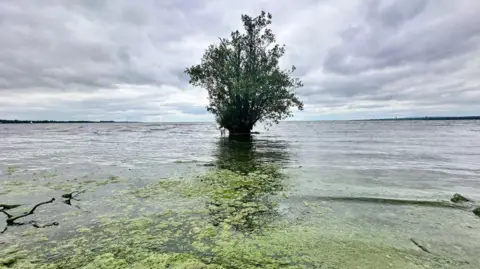 BBC
BBCBlue-green algae is “back with a vengeance”, according to the Lough Neagh Partnership.
The Earl of Shaftesbury, who owns the bed and soil of the lough, is travelling to Belfast on Wednesday to discuss its future with stakeholders.
Nicholas Ashley-Cooper is to meet Stormont’s environment minister, Andrew Muir, amid renewed calls for him to transfer ownership.
Speaking ahead of the meeting, Mr Muir said he was looking forward to discussing “how any possible transfer into community ownership could be achieved“.
Last year saw the lough blighted by large blooms of potentially toxic blue-green algae.
Lough Neagh is the UK’s largest freshwater lake.
It supplies about half of Belfast’s drinking water and about 40% of Northern Ireland’s overall.
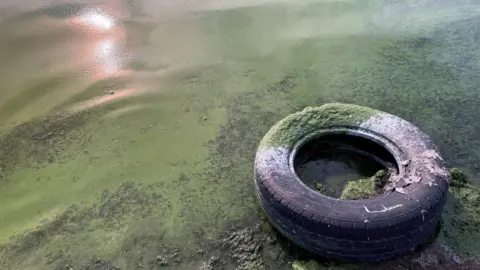
People Before Profit MLA Gerry Carroll said the earl has “no right to Lough Neagh” and should give it “back into public ownership before leaving Belfast”.
The Shaftesbury estate has held ownership of the bed and soil of Lough Neagh since the 19th century, after the Chichester family took control in the 17th century.
Lord Shaftesbury, who is the 12th member of his family to hold the title of earl of Shaftesbury, told BBC News NI last year he was open to the idea of selling the Lough but would not be giving it away.
Following a meeting with Andrew Muir in February, he said his position had not changed.
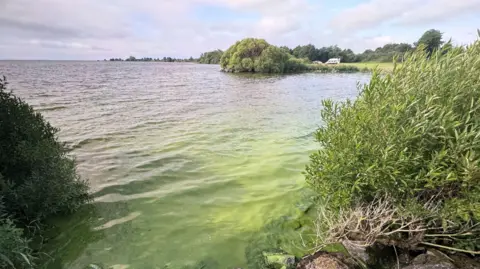
BBC News NI agriculture and environment correspondent Louise Cullen says no short-term kneejerk reaction is going to change the fact that algal blooms will continue to happen.
“The amount of phosphorus already in the sediment will take 40 years to be naturally dispersed, according to scientists, even if nothing more was to flow into the water from now,” she says.
“Lough Neagh is a long-term challenge fraught with many difficulties, and it will take all the players working together to make a start on addressing them.”
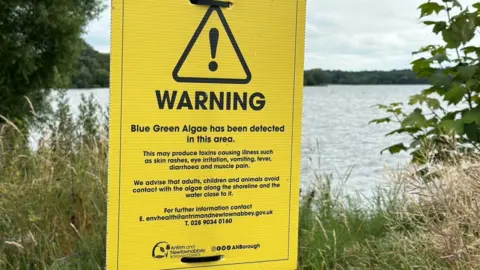
Stormont action plan
At the start of June, Mr Muir announced a range of actions to tackle the problems of Lough Neagh.
The measures are part of the Lough Neagh Report and Action Plan that fall under his department.
They included a research initiative as well as a tree-planting project and programmes aimed at supporting farmers and slurry spreaders.
The report has been with the Northern Ireland Executive since mid-June, but ministers have not yet agreed to it.
Some further elements of the plan are cross-cutting and require executive approval to be implemented.
In a statement released on Tuesday, the Lough Neagh Partnership expressed “profound disappointment over the Northern Ireland Executive’s failure to approve a critical action plan to prioritise addressing this environmental catastrophe”.
Gerry Darby from the group said: “It has come as no surprise that the algae is back with a vengeance, as it was only a matter of time with the right weather conditions that it would reappear.”
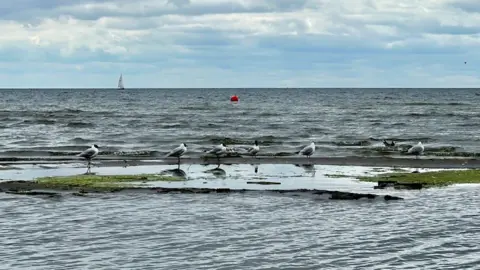
Has blue-green algae returned to Lough Neagh this year?
In July 2023, blue-green algae had appeared on Lough Neagh at a level not seen since the 1970s.
In 2024, the Department for Agriculture, Environment, and Rural Affairs (Daera) recorded 47 confirmed reports of blue-green algae.
Seventeen of these confirmed sightings have been on Lough Neagh.
On Tuesday, Daera advised people against bathing at Rea’s Wood in Lough Neagh due to “the presence of a thick algal scum”.










